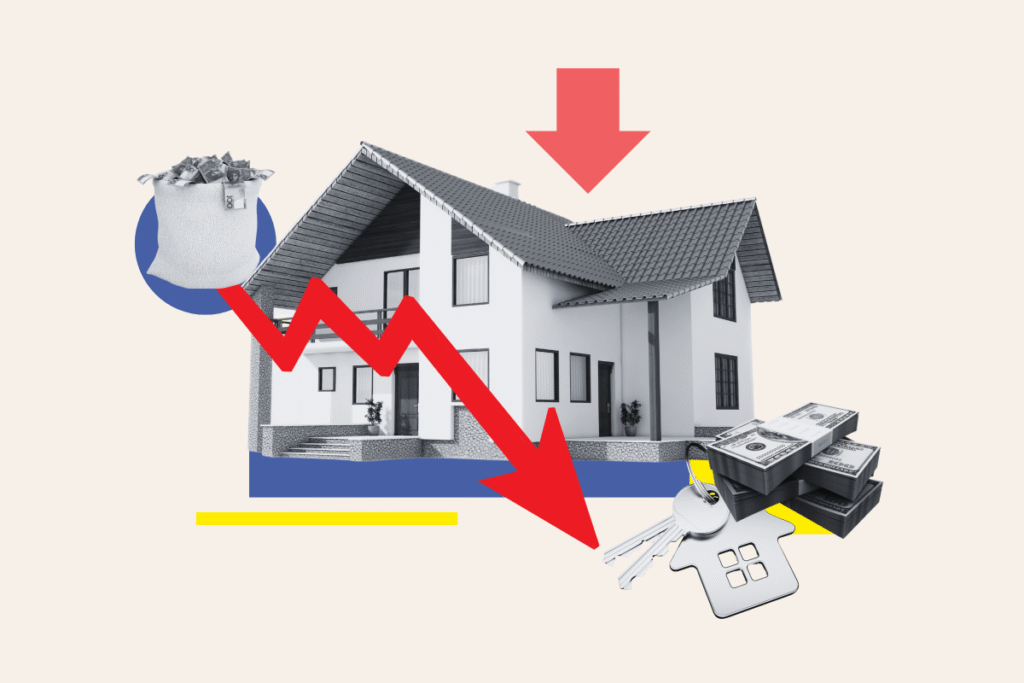The flagging economy is beginning to weigh heavily on the U.S. housing market. President Donald Trump’s trade war is pushing construction costs higher, and interest rates are expected to remain elevated through the rest of the year. According to the original report, “The faltering economy is starting to become a drag on the housing market.”
Real estate agents, developers, homebuyers, and economists are grappling with unpredictable trends. “Slower growth — the economy shrank at the beginning of 2025 — means interest and mortgage rates will probably stay high for the foreseeable future.” Combined with stock market swings and eroding consumer confidence, these conditions are driving potential buyers out.
“President Donald Trump’s trade war is adding thousands to construction costs for new homes and remodels,” the article notes. Robert Dietz, chief economist at the National Association of Home Builders, explained, “Markets work because people have price knowledge… But so much uncertainty is creating a ‘wait-and-see economy.’”
Housing Market Reflects Broader Economic Woes
As one of the biggest investments most households make, housing is deeply tied to the wider economy. “Entire budgets are structured around monthly mortgage payments or rent,” the article notes. Therefore, disruptions in housing resonate across all sectors of life.
“Experts look to the number of homes for sale or list prices as litmus tests for how the broader economy is faring,” and vice versa, with affordability and availability serving as key indicators of how Americans feel the economic strain day-to-day.

Mixed Signals: A Short-Lived Boost Amid Broader Decline
In March, new home sales rose by over 7 percent — “the highest jump since September” — especially in the South and Midwest. This spike followed a brief dip in mortgage rates, which encouraged a wave of new loan applications and refinances.
But that good news was quickly overshadowed. “Existing-home sales in March saw their biggest monthly drop in more than two years, falling almost 6 percent.” At the same time, “construction spending fell broadly,” and “housing starts… fell more than 11 percent,” with labor shortages and high borrowing costs halting new projects.
Builders Hit by Trade War Tariffs
Trump’s trade war has soured builder sentiment, reversing post-election optimism. “Sixty percent of builders said their suppliers have already increased or announced increases on materials prices because of tariffs,” according to survey data from the National Association of Home Builders/Wells Fargo Housing Market Index.
“All told, builders are estimating a typical cost bump of almost $11,000 per home.” While some materials, like Canadian lumber, were exempt from new levies, Dietz said, “that leaves plenty of ‘the nuts and bolts used to make a home’ subject to steeper costs.”
Rents and Prices Keep Climbing
“Rent has also risen for three straight months after cooling late last year,” according to Apartment List. Meanwhile, “home prices keep ticking up, rising 3.9 percent in February,” based on S&P CoreLogic Case-Shiller Index data.
This upward trend in prices and rents is compounding affordability issues. The Mortgage Bankers Association has already “lowered their estimates for existing and new-home sales in 2025” and expects “just over 1 million single family starts for the next two years.”
Economy on Edge as Recession Fears Mount
Recent GDP figures revealed “the first contraction since early 2022,” sparking fears of another recession. If companies reduce hiring or begin layoffs, the housing market could feel the blow almost immediately, with rising unemployment jeopardizing mortgage payments and homeownership.
“The markers are a snapshot of an economy in uncharted territory once again.” Inflation, though briefly tamed, could rise again due to the trade war’s pressure on supply chains and production costs.
Cash Buyers and Wealthy Builders Avoid the Worst
Despite the turbulence, not all market participants are affected equally. “Roughly a third of home purchases were made in cash in 2024,” per Redfin. Large builders with supply contracts or those catering to higher-end clients are better insulated from tariff volatility.
Builders like Alan Simonini in Charlotte are continuing operations with minor adjustments. “I think that all this stuff is going to go away in a few months… I really anticipate it’s not going to go up more,” he said.
Caught in the Middle: Real Stories from Buyers and Sellers
Many homeowners are stuck, caught between rising costs and inflexible financial realities.
Bill Vallaire and his wife are among them. Living in Prescott, Arizona, they are reluctant to move closer to Phoenix for medical needs due to prohibitive costs. “We don’t need that big of a house, but until things break on mortgage rates, we’re kind of stuck,” Vallaire said.
Others, like Nate and Margie Sanchez near Phoenix, gave up selling altogether. “We had a buyer who wanted a new roof, money toward AC, when we already dropped our house [price] by 60 grand,” Nate Sanchez explained. “It was a tipping point for us to stay where we were at.”
Eyes on the Job Market and Federal Budget
In the Washington area, Sam Medvene, president of the DC Association of Realtors, is watching government job cuts closely. He pointed to the end of September as a turning point when buyout-funded federal employees stop receiving paychecks.
That could drive more listings, potentially flipping the market. “It would be telling to see whether unemployment causes a spike in inventory, so much so that it outpaces demand,” he noted.
Conclusion:
The housing market sits at a critical crossroads, where economic stagnation, policy decisions, and global trade friction are pushing against the optimism of springtime sales. From builders absorbing cost hikes to families delaying life changes, everyone is watching and waiting — for relief in rates, for clarity in pricing, and for signs that stability might return.
Warren Buffett to Step Down as CEO of Berkshire Hathaway by Year’s End



